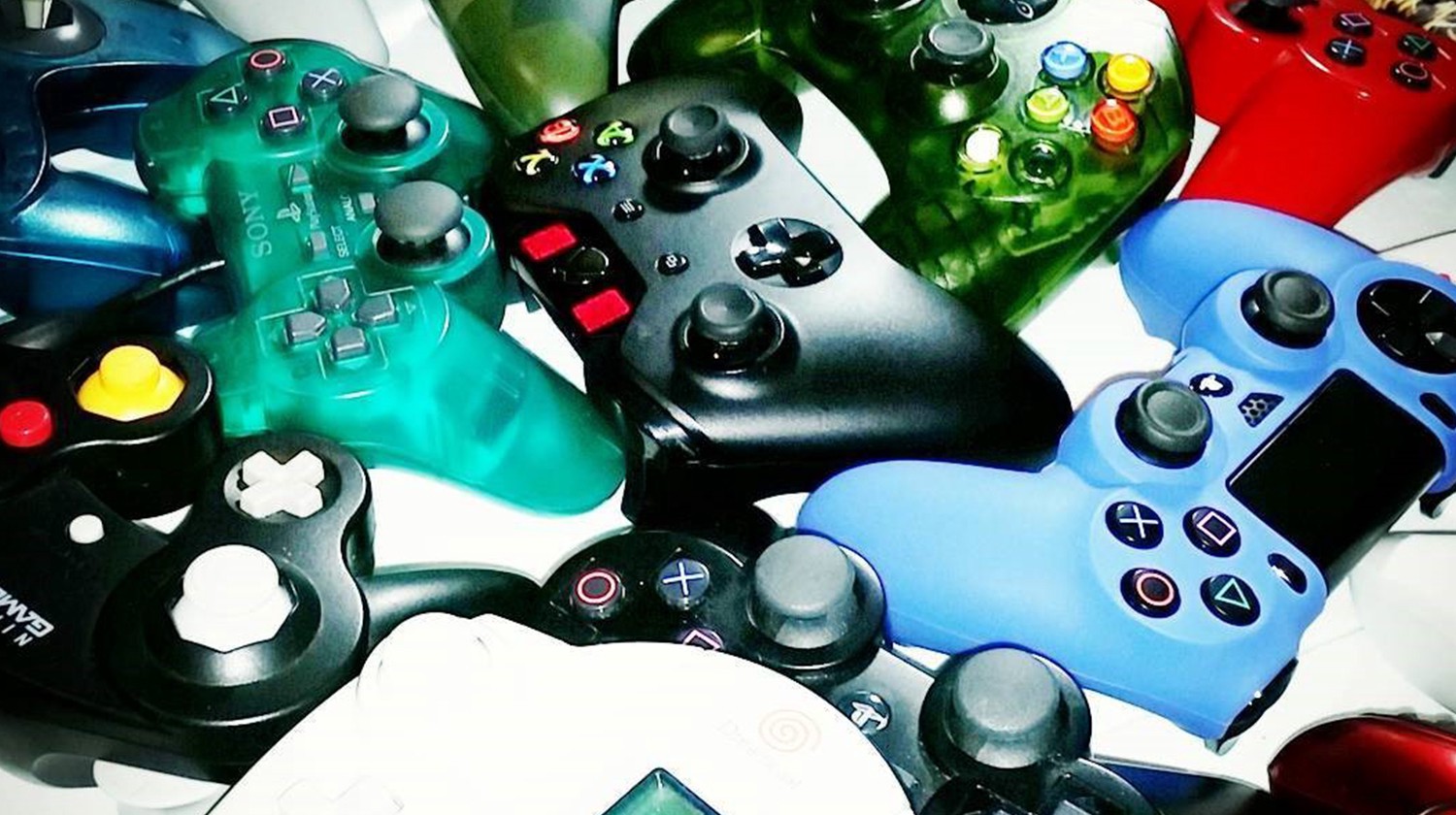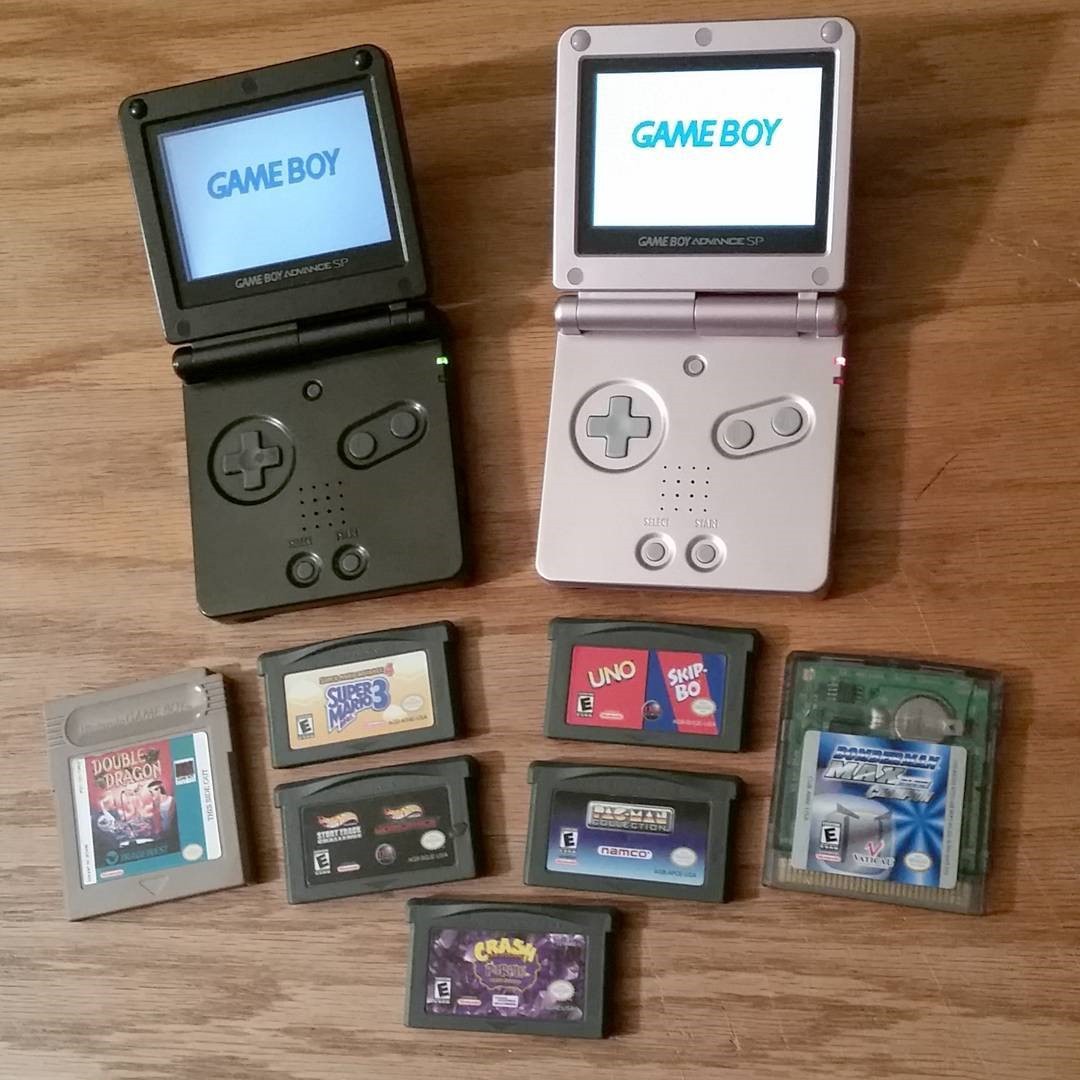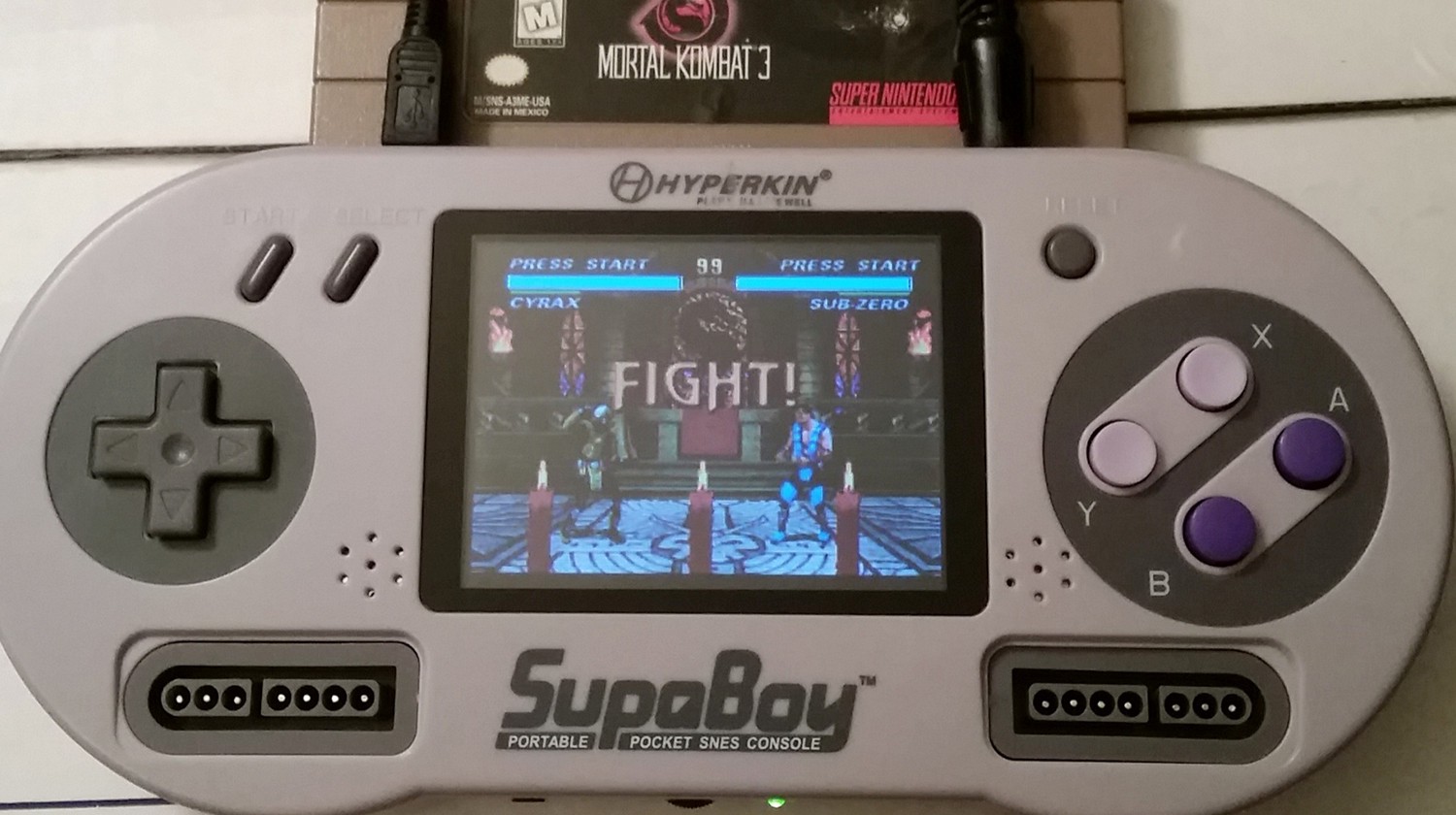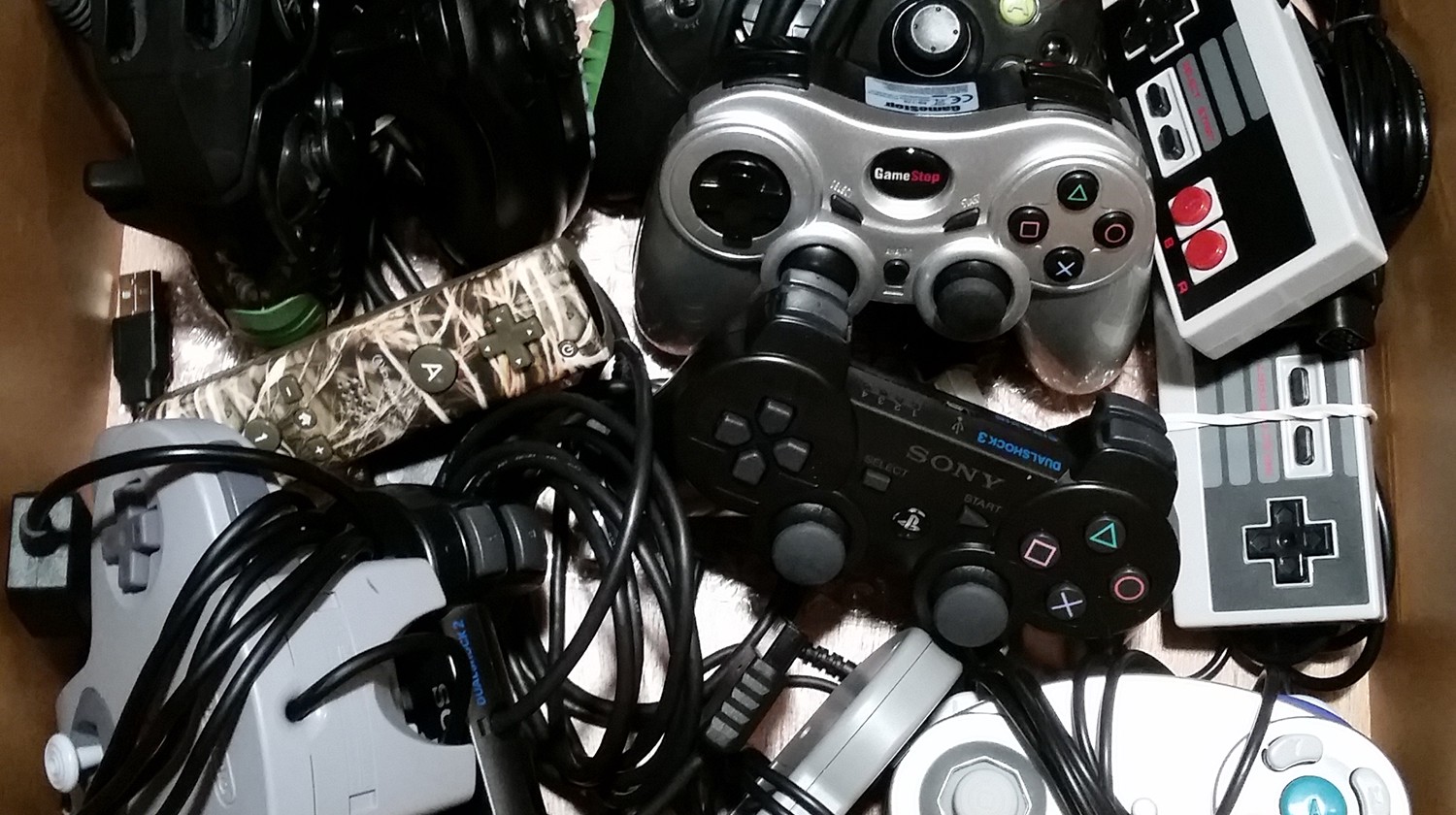Back in the day, owning more than two video game consoles instantly made you the most popular kid on the block. If that were still true today, my husband and I would probably be the coolest couple in north Texas. Our daughters might love our ridiculously large collection, but I cringe to see our consoles, cables, and controllers just gathering dust. Sure, we could probably hook them all up with the help of some video splitters ? but we?re lazy and that sounds like a lot of work. We?d probably have to rewire our whole house just to handle the load. Nope, not happening.
 I just want to play my old video games without collecting a ton of old hardware. Why is that so hard? (Image via Cosmic Wares)
I just want to play my old video games without collecting a ton of old hardware. Why is that so hard? (Image via Cosmic Wares)
When your gaming collection gets out of control, backward compatibility can be a great alternative ? if it actually works as promised. Just a couple of weeks ago, I tried a game in a supposedly backward compatible console and it wouldn?t even load. ?Backward compatible, my ass!,? I muttered?and the inspiration for this series was born. Since then, I?ve gone on a mission to research the best and most reliable backward compatibility options available today for retro gamers.
In this series, I will cover the video game systems, peripherals, and third-party hardware that provide backward compatibility. To keep things simple, I won?t be discussing obscure prototype and developer hardware or modding and hacking methods. Please note that this isn?t an exhaustive list ? if I don?t mention it, that?s probably because it sucks, it?s extremely rare, or it isn?t actually backward compatible.
Nintendo
For the most part, Nintendo embraced backward compatibility with its handheld consoles. Beginning with the Game Boy Color, nearly every Nintendo handheld has been backward compatible with older games. Unfortunately, that isn?t the case with Nintendo?s home consoles. A couple of them offer limited backward compatibility, but you?ll need peripheral accessories or unlicensed clone consoles to play all of your games.
Nintendo also offers the Virtual Console service on Wii U and 3DS, which allows you to purchase and play old Nintendo, Sega, Neo Geo, TurboGrafx, Commodore 64, and arcade games. Sadly, Wii owners can no longer buy Virtual Console games. However, you can always transfer your previously-purchased Virtual Console games from your Wii to a Wii U.
Consoles
- The original Wii (model #RVL-001) is designed to be backward compatible with GameCube game discs, controllers, and memory cards. However, any online/LAN features of your GameCube discs will not work properly. Later Wii editions are not GameCube compatible at all.
- Original Wii games can be played on a Wii U. They aren?t compatible with the Wii U gamepad, though, so hold on to your original Wii controllers and accessories.
 The Game Boy Advance SP is compatible with all of these game cartridges. (Image via Cosmic Wares)
The Game Boy Advance SP is compatible with all of these game cartridges. (Image via Cosmic Wares)
Handhelds
- The Game Boy Color is backward compatible with original Game Boy games. But don?t expect them to play in full-color on a GBC ? original Game Boy cartridges display in a tonal palette of your choice.
- The Game Boy Advance and Game Boy Advance SP are backward compatible with Game Boy Color and original Game Boy games. Special cartridges like Kirby Tilt n? Tumble or the Game Boy Camera might present some difficulties, however. As you can see in the photo above, the redesigned backlit SP model #AGS-101 (right) offers a brighter and crisper display than the original frontlit version (left).
- The Nintendo DS and DS Lite have an additional slot that supports Game Boy Advance games or special-function cartridges like the DS Rumble Pak.
- All Nintendo 3DS and 2DS models are backward compatible with both DS and DSiWare games and apps.
Peripherals
- The Super 8/Tristar/Tri-Star lets you play SNES, NES, Famicom, and Super Famicom games on your Super Nintendo. It can be a bit finicky, so read this guide for tips and troubleshooting. Retro-Bit?s RetroPort is a modern alternative, but owners have complained about its video quality and issues with cartridge compatibility.
- The Super Game Boy will play original Game Boy or dual-mode Game Boy Color cartridges (in GB mode) on the Super Nintendo. Exclusive Game Boy Color games are not supported.
- The Tristar 64 connects to a Nintendo 64 and will play NES, Famicom, SNES, and Super Famicom games. It also provides some GameShark-like abilities. However, it has lackluster graphics and it doesn?t support any games with a coprocessor (like Super Mario RPG).
- Nintendo?s official Game Boy Player attachment lets you play Game Boy Advance, Game Boy Color, and original Game Boy cartridges on your GameCube console. If you buy one of these, make sure you get the disc for it along with the hardware.
 The Hyperkin SupaBoy portable can play SNES and Super Famicom games. (Image via Cosmic Wares)
The Hyperkin SupaBoy portable can play SNES and Super Famicom games. (Image via Cosmic Wares)
Clones
Dozens of companies have made unlicensed hardware clones of the NES, SNES, and Game Boy consoles over the years. Unfortunately, legal issues and the Nintendo 64?s complicated hardware architecture mean we probably won?t see a viable N64 clone anytime soon. The quality of these ?Famiclone? systems can vary widely, so it?s sometimes hard to separate the wheat from the chaff. Here are the clones that are actually worth your time and money:
- The extremely versatile Retro Freak from Cyber Gadget allows you to play your cartridges for NES, Famicom, SNES, Super Famicom, Game Boy Advance, Game Boy Color, Original Game Boy, Genesis, Mega Drive, TurboGrafx-16, PC Engine, and SuperGrafx ? all in 720p HD.
- Hyperkin has been making popular Famiclones for years, and their HDMI-capable RetroN 5 is compatible with NES, Famicom, SNES, Super Famicom, Genesis, Mega Drive, Game Boy, Game Boy Color, and Game Boy Advance games.
- Retro-Bit?s Super RetroTRIO Plus will let you play NES, SNES, and Genesis games in 720p HD. However, a few titles may have issues loading or might play at PAL speed instead of NTSC.
- Also from Hyperkin, the redesigned SupaBoy SFC handheld will play Super Famicom or Super Nintendo games in 4:3 or 16:9 aspect ratio. You can also hook it up to your TV, use SNES controllers, or pair it with the Super Game Boy adapter. Some people love the SupaBoy, but doesn?t lugging around your cartridge collection defeat the purpose of buying a handheld?
What Should I Buy?
When it comes to backward compatibility, it?s important to remember that nothing will be 100% compatible with everything it claims to support ? so don?t be surprised if you have occasional issues with certain games. Which backward compatibility option you should choose really depends on your personal preferences. Start by thinking about which games you want to play and how you want to play them, then take a look at my top picks for:
The gamer on the go: You like portability and you don?t care about playing with physical cartridges. Nintendo?s New 3DS XL ($199) is your best bet. It?s backward compatible with DS/DSi games, and the Virtual Console offers a large library of your favorite retro titles at very reasonable prices ($2-$10).
The hardcore collector: You have tons of old Nintendo games and you want to play them on authentic Nintendo hardware. You?ll need a few different systems to cover most of the classics:
- The compact and rechargeable Game Boy Advance SP ($60-$100) will let you play your Game Boy Advance, Game Boy Color, or original Game Boy cartridges.
- Don?t bother with the mediocre and expensive Tristar 64. A Nintendo 64 ($75) with an Expansion Pak ($30) and a Super Nintendo ($70) with a Super 8 or Tristar adapter ($120) can handle nearly every NES, Famicom, SNES, Super Famicom, and N64 game you own.
- Finally, pick up an original Wii ($60) to play your Wii and GameCube discs.
The minimalist: You want to downsize but still be able to play all of your old Nintendo games. A Famiclone provides the easiest solution, and Cyber Gadget?s Retro Freak offers the best bang for your buck. The Retro Freak + Controller Adapter package ($269) plays cartridges from 12 different systems, and the Gear Converter ($99) adds support for four more. You can use the included gamepad or your own modern or retro controllers. It also offers upscaled 720p HDMI output, cheat codes, save states, and a robust options menu.
Most importantly, the Retro Freak has a MicroSD slot which allows you to install your classic game cartridges onto an SD card. Then you can remove the bulky cartridge adapter and use just the lightweight base unit to play your games (or other downloaded ROMs) anywhere you want. With your games stored on the SD card, you could also back them up to your computer or the cloud and sell your cartridges to consolidate your collection even further.
 You know you?ve got a problem when you have a drawer just for controllers ? but they don?t all fit. (Image via Cosmic Wares)
You know you?ve got a problem when you have a drawer just for controllers ? but they don?t all fit. (Image via Cosmic Wares)
Stay Tuned!
I hope you enjoyed this first installment on video game backward compatibility, and that the options I listed have given you some ideas on how to downsize your Nintendo collection and still play all of your favorite games. In the next part of this series, I will cover the best backward compatible options for Nintendo?s biggest rival during the ?90s console wars: Sega.
I?m pretty sure ?Blast Processing? is just something Sega made up to sound cooler than Nintendo. It worked.


